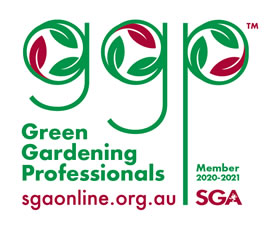| item(s), Total: $0.00 View Cart |
| Shopping cart is empty. |
Hello & welcome to October - Spring is definitely here; this month sees us transition into Kambarang - the Nyoongar season of birth. Days are getting warmer and dryer - many more native plants start to flower, reptiles are on the move, and you're more likely to encounter a swooping Koolbardie (Magpie) as they get protective of their nests & young. Our local clan view me with suspicion when I walk the dog - but I talk to them all through the year as I pass, and I'm sure they know me as that crazy lady who isn't a threat and I haven't been swooped for a couple of seasons now. They do say they can identify individuals! In our gardens, it's a real season of transition. Winter crops may be starting to bolt to seed, broad beans are coming on strong to harvest, garlic is getting closer (don't be tempted to pull it just yet without checking - in my garden I'd say it needs at least another month). It's time to get planting all the summer crops - but more on that in the 'What to Plant Now' section below. Weeds are all flowering (and setting seed) so do make sure you get on top of them as much as you can! Our cauliflowers are coming on strong & I've just harvested several cabbages and made a batch of sauerkraut - my attempt last year turned out so well, and it's a great way to use that surplus flush.
Paul & I were recently invited to be guests on a new podcast that LIAWA (Landscaping Industry Assoc of WA) has launched - "Green Thumbs Up". It was good fun to be a part of it & when it's released, I'll share the link in future newsletters/social media. We hope you're enjoying your spring in the garden! Remember the work you do now will pay off heaps over the coming months - your garden will be more resilient, use less water and be just a whole lot greener for prepping your soil and mulching at this time. See you soon @ Green Life!
In this newsletter:What to do in the October garden Jobs to do in the October garden
What to Plant NOW
Asian greens (Bok Choi/Tatsoi etc.) Artichoke (globe & Jerusalem), Basil, Beans, Beetroot, Broccoli, Capsicum, Chilli, Carrot, Celery, Celeriac, Choko, Cucumber, Eggplant, Ginger, Kale*, Kohl rabi*, Leek, Lettuce, Melons, Okra, Parsnip, Pumpkin (pictured right), Radish, Rocket, Rosella, Silverbeet, Spring onion, Squash, Strawberries, Sweet corn, Sweet potato, Tomato, Turnip, Zucchini. * these vegies are often better grown in cooler weather; if planting now, make sure you have a protected spot (they'll bolt to seed if too hot), and watch Kale/Kohl rabi in particular for caterpillars which are more active in the warmer months - insect netting is highly recommended. There's also HEAPS of herbs that will flourish at this time of year - Basil, Chives, Oregano, Mint, Parsley, Thyme, Sage, Comfrey, Borage - just to name a few! Within each of these, there's multiple varieties available - so get creative and get a herb garden growing for your summer entertaining garnishes and tasty treats. You don't need a lot of space (a pot on your verandah will do!) to reap the rewards.
We've got heaps of fact sheets on specific vegies & growing guides freely available - check out our 'Learn' tab on our website. Growing your Vegies from Seed
Here's a few pointers to get you started:Select the varieties you wish to grow. Make sure they're suited to the season. Collect all the other bits and pieces you need. It's great to recycle punnets and pots - just make sure you give them a thorough wash with hot water and a little bit of household bleach to remove any soil and pathogens. Give your tools and work space a wash down too - hygiene is important. Allow things to dry off in the sun - then you're ready to go! Seeds need a light and friable mix to allow for germination and easy root penetration. Potting mixes tend to be too heavy; which is why special mixes are made for the job. We make a Certified Organic Seed Raising Mix that is perfectly suited to this purpose. Made of a blend of cocopeat, vermiculite and other premium ingredients, it will get your seeds off to a flying start! Remember any seed raising mix is designed to work in the early stages of germination and growth - it is not designed as a long term potting mix; so if you're keeping seedlings in it for any length of time, liquid fertilise to provide the nutrition that growing plants need.
Make sure you label your seedling trays/pots. We've all been so confident we'll remember what's planted where & when. And we all get busy and forget. Label. your. seedlings.
Temperature is key. Our handy downloadable 'when to sow' guide has a listing of common vegies & their ideal germination temperatures. Remember that soil temperatures are what counts - not ambient temperature. Many summer crops need warmer soil - so keeping seedling trays on a window sill or on a dark surface outside may help (but again monitor to make sure it's not getting too hot!). Good filtered light rather than direct sunlight is ideal. Once you've done all the right things it's a waiting game until you see your seedlings emerge. It's an exciting moment when you see life bursting through the soil - it really is a little miracle every time. Some seeds will take a lot longer than others to germinate. The average is between 1-2 weeks; some will take even longer, so never give up hope!
Lastly, every year and season is going to be different - which makes timing of sowing seeds a constant challenge. A gardening diary or planting guide will be a general tool only - like much of life, learning comes from trial and error! For more reading on seed raising, see our fact sheet here. Living Soil (including a VERY brief history of modern agriculture!!)
Once upon a time - everyone gardened organically. We used manures and composts to fertilise - taking things from the soil and returning them to the soil to replenish fertility and keep the cycle going. Then a little over a hundred years ago, scientists began learning about the nutrients plants used, and set about isolating and synthesizing them to increase growth and yield. With growing populations, improved transportation and other factors, food production became less localised and more industrialised - we created bigger farms, and used more fertilisers to increase production and feed the world cheaply. You pretty much know the story. Since the 1920's, the organic movement existed as something of a pushback - a group of dedicated farmers who believed that working with the soil and environment held the key to healthier plants, animals and humans. This movement has grown and flourished. Today, with climate change, polluted and degraded soil and still growing populations, we need science to assist us in so many ways; thankfully there's a huge movement towards Regenerative Farming; which is about working with nature and the land rather than trying to dominate it. Soil health is paramount to our own survival - and microbes play a huge part in that.
The difference between a certified organic approach (and that of living soils) is to replicate what nature does. That is, to provide a wide range of nutrients from animal and plant material, plus in a rock mineral form, and to allow microbes to go to work to turn these nutrients into a plant available form. This takes longer, but the key is that soil health builds over time. Healthy microbial populations build the environment for larger soil creatures (arthropods and worms) which are then food for larger animals. Plants develop beneficial relationships with soil microbiology - feeding soil microbes simple sugars in exchange for nutrients that must come from the soil. This is part of the whole soil food web cycle - the way nature has always done it. A wide range of inputs to your soil ensures a wide range of food for soil life; creating a wide range of nutrients for your plants, resulting in nutrient dense, healthy produce for humans to consume.
Microbes need what we need to survive - food, air and water. Most are active in the top 10-20cms of soil where plant feeder roots are, so that's another reason why it's vital to mulch your soil in our hot weather. Dry soil is not good microbe habitat! At The Green Life Soil Co, our approach is to provide you with living, healthy soil; and we use a wide range of quality ingredients that you won't get in most other mixes. We believe it makes a positive impact on our gardens and the wider environment - so if you like the sound of having 'living soil' too - come and see us soon. VIP Special Offer
Photo competition
She had this comment with her photo: "I made this macrame sampler out of some of the rope I got from you. There’s still a few little finishing touches needed but you get the gist. I think I’m going to try my hand at a mandala next. Cheers, Sally" So congratulations Sally - you're our winner with your novel macramé upcycling project! Well done! Send your photos in via Facebook or email - with 'photo competition' as the subject line. Retailer Update
Beaufort Garden World - Inglewood 9271 0585 (pictured right) Ardess Nursery (Albany) 9842 9952 THANK YOU for being part of The Green Life Family! Keep up to date with news & info on our Facebook and Instagram pages. Until next time - Happy Gardening! |

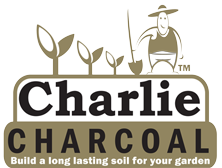

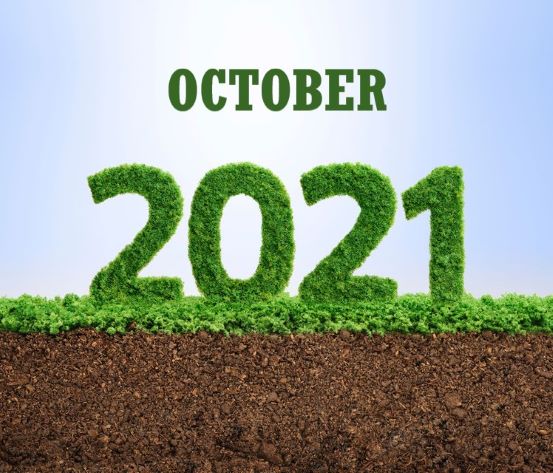
.jpg) October marks a special anniversary for GLSC. 2021 marks 20 YEARS that Paul & I have owned the business. A few customers lately have commented on the 15th birthday celebration day we had (our Spring garden fair) - so maybe we need to plan a big celebration next year for our 21st!!! Who's in??
October marks a special anniversary for GLSC. 2021 marks 20 YEARS that Paul & I have owned the business. A few customers lately have commented on the 15th birthday celebration day we had (our Spring garden fair) - so maybe we need to plan a big celebration next year for our 21st!!! Who's in?? Linda & all the team
Linda & all the team Weeds- Most would be about to go to seed at this time. Time to rip these babies out or even slash them, whatever action you choose will help to minimise spread. See our fact sheet on organic weed control here.
Weeds- Most would be about to go to seed at this time. Time to rip these babies out or even slash them, whatever action you choose will help to minimise spread. See our fact sheet on organic weed control here.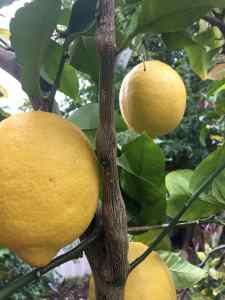 Fruit Trees- At this time of year it is important to keep an eye on flowering and fruiting trees. If you have fruit fly in your area, start netting those trees now - as soon as fruit has set! (We sell insect netting packs @ GLSC). It's almost your last chance to deal with citrus gall wasp - adults will be emerging & breeding and laying eggs again. (See photo right) Sticky traps in your trees may help with control. Make sure you use a protective sleeve around the traps to stop small birds getting stuck on the traps, and remember to remove them in a few weeks once the CGW season moves on. Traps will also catch pollinators and beneficial insects, so don't leave them in your trees longer than necessary. Another thing to try is our
Fruit Trees- At this time of year it is important to keep an eye on flowering and fruiting trees. If you have fruit fly in your area, start netting those trees now - as soon as fruit has set! (We sell insect netting packs @ GLSC). It's almost your last chance to deal with citrus gall wasp - adults will be emerging & breeding and laying eggs again. (See photo right) Sticky traps in your trees may help with control. Make sure you use a protective sleeve around the traps to stop small birds getting stuck on the traps, and remember to remove them in a few weeks once the CGW season moves on. Traps will also catch pollinators and beneficial insects, so don't leave them in your trees longer than necessary. Another thing to try is our  Check out our free '
Check out our free '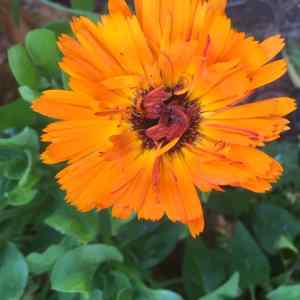 If you have room around your garden, add in some flowering annuals. They'll help bring in pollinating and other beneficial/predatory insects, as well as providing colour and decoration. At this time of year consider Alyssum, Calendula (pictured right), Cosmos, Lobelia, Petunias (and as an added benefit - if you plant the white variety, their fluttering petals help confuse the cabbage butterfly!), Portulaca, Sunflowers - there's heaps more; just ask us (or your local independent nursery).
If you have room around your garden, add in some flowering annuals. They'll help bring in pollinating and other beneficial/predatory insects, as well as providing colour and decoration. At this time of year consider Alyssum, Calendula (pictured right), Cosmos, Lobelia, Petunias (and as an added benefit - if you plant the white variety, their fluttering petals help confuse the cabbage butterfly!), Portulaca, Sunflowers - there's heaps more; just ask us (or your local independent nursery).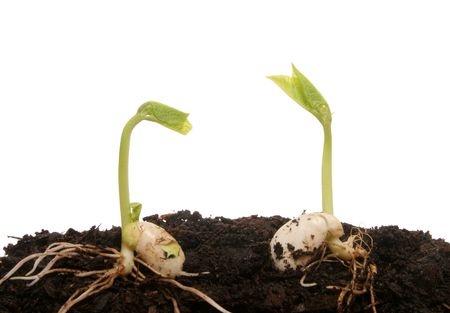 There are many advantages to growing your own vegies from seed - plus it's hugely rewarding and good fun! It's the most cost effective way to grow your own food, and if you save your own seed - you're on your way to self sufficiency! While some seed is fine to plant directly into your garden bed; at the start of the season when conditions may be a bit "iffy" - or, for beginners, it may be easier to start seeds into pots or trays - that way you can keep an eye on conditions and give seedlings a little bit extra TLC.
There are many advantages to growing your own vegies from seed - plus it's hugely rewarding and good fun! It's the most cost effective way to grow your own food, and if you save your own seed - you're on your way to self sufficiency! While some seed is fine to plant directly into your garden bed; at the start of the season when conditions may be a bit "iffy" - or, for beginners, it may be easier to start seeds into pots or trays - that way you can keep an eye on conditions and give seedlings a little bit extra TLC.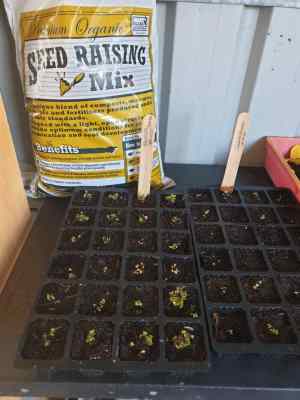 Open your seed packets carefully - you're unlikely to be using them all at once, so make sure you can re-seal the bag/envelope. Sow seeds carefully - they need space to grow. Water gently (with that fine rose) so as not to wash the seeds out. Small seeds like lettuce do not require covering and can be lightly pressed into the mix with your fingertip or the blunt end of a pencil. The objective is to make sure the seed is in contact with the soil; you're not trying to bury them. In fact - lettuce needs light to germinate. So burying them isn't the path to success.
Open your seed packets carefully - you're unlikely to be using them all at once, so make sure you can re-seal the bag/envelope. Sow seeds carefully - they need space to grow. Water gently (with that fine rose) so as not to wash the seeds out. Small seeds like lettuce do not require covering and can be lightly pressed into the mix with your fingertip or the blunt end of a pencil. The objective is to make sure the seed is in contact with the soil; you're not trying to bury them. In fact - lettuce needs light to germinate. So burying them isn't the path to success.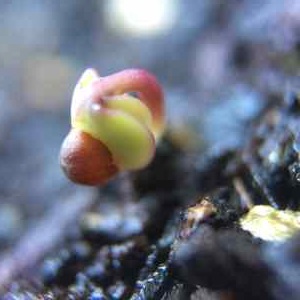 Germination begins once water penetrates the seed coating; so it's important to make sure you maintain constant moisture - but that doesn't mean waterlogging your soil! Seeds that are wetted but then dry out is the other major reason that seeds fail. Often you can't even see any germination yet - but it's happened. It's quite difficult with tiny seed, so do pay attention to your watering. A light mist regularly, keeping the seedling trays covered with glass or plastic to help against evaporation is useful too - but make sure that you don't cook the soil or seedlings in sunny weather; and allow air circulation once seedlings have germinated.It's usually OK to stand seedling trays in a little water too - capillary action can assist in keeping soil moist. Do monitor the soil - if too damp, fungal problems can occur. Weak chamomile tea is anti-fungal; so allow a cup to cool and add to a spray bottle - it's fine to use this as your watering system.
Germination begins once water penetrates the seed coating; so it's important to make sure you maintain constant moisture - but that doesn't mean waterlogging your soil! Seeds that are wetted but then dry out is the other major reason that seeds fail. Often you can't even see any germination yet - but it's happened. It's quite difficult with tiny seed, so do pay attention to your watering. A light mist regularly, keeping the seedling trays covered with glass or plastic to help against evaporation is useful too - but make sure that you don't cook the soil or seedlings in sunny weather; and allow air circulation once seedlings have germinated.It's usually OK to stand seedling trays in a little water too - capillary action can assist in keeping soil moist. Do monitor the soil - if too damp, fungal problems can occur. Weak chamomile tea is anti-fungal; so allow a cup to cool and add to a spray bottle - it's fine to use this as your watering system.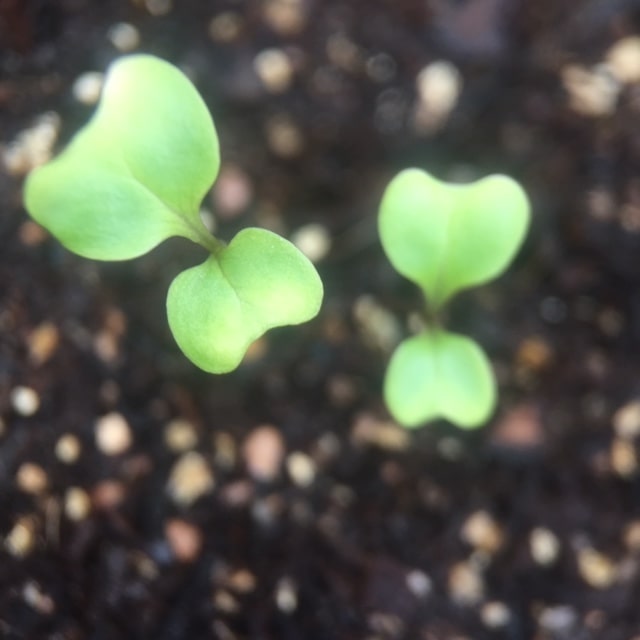 The first little leaves you see pop out are called cotyledons (pictured right). They are designed to quickly feed the roots to allow the plant to grow, and don't look anything like the true leaves that follow. Once seedlings have germinated, it's important to make sure they get plenty of light - otherwise they'll grow long and leggy trying to stretch - and this means weaker plants. Usually once one or two sets of true leaves have emerged, seedlings are ready for transplanting. Always try to disturb roots as little as possible - use a pencil or chopstick to dibble out planting holes to pop them into and firm the soil back around the roots. If you have worm castings, a handful into the soil where you're about to transplant the seedlings will kick them off and a feed of kelp fertiliser is great at transplanting time to help prevent shock. Give your plants enough space to mature; and keep them protected from snails and slaters at this delicate stage.
The first little leaves you see pop out are called cotyledons (pictured right). They are designed to quickly feed the roots to allow the plant to grow, and don't look anything like the true leaves that follow. Once seedlings have germinated, it's important to make sure they get plenty of light - otherwise they'll grow long and leggy trying to stretch - and this means weaker plants. Usually once one or two sets of true leaves have emerged, seedlings are ready for transplanting. Always try to disturb roots as little as possible - use a pencil or chopstick to dibble out planting holes to pop them into and firm the soil back around the roots. If you have worm castings, a handful into the soil where you're about to transplant the seedlings will kick them off and a feed of kelp fertiliser is great at transplanting time to help prevent shock. Give your plants enough space to mature; and keep them protected from snails and slaters at this delicate stage.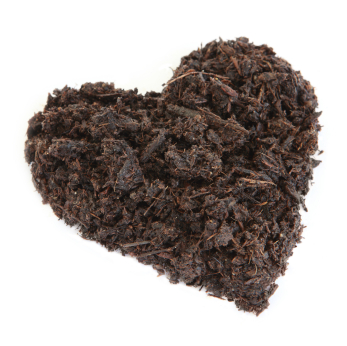 For a few years now, there's been a buzz around the internet and on plant growing forums about "living soil" or "super soil" or "just add water soil" [because you don't need to add extra fertilisers before planting]. It's puzzled us a bit at Green Life - because, to be quite frank, it's all we've ever been about (and the same for all organic gardeners) - but you know what they say - everything old is new again. So we find ourselves accidentally at the forefront of a movement. I guess if it's about healthy soil - it's a good place to be!
For a few years now, there's been a buzz around the internet and on plant growing forums about "living soil" or "super soil" or "just add water soil" [because you don't need to add extra fertilisers before planting]. It's puzzled us a bit at Green Life - because, to be quite frank, it's all we've ever been about (and the same for all organic gardeners) - but you know what they say - everything old is new again. So we find ourselves accidentally at the forefront of a movement. I guess if it's about healthy soil - it's a good place to be!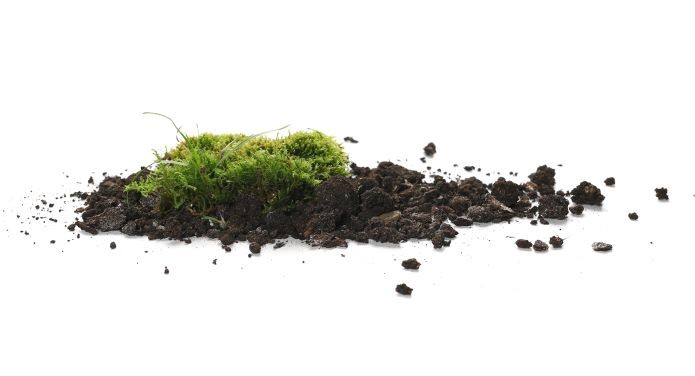 Which is where we come back to 'living soil' and what it means to the home gardener. On this smaller scale, most commercial soil mixes available as potting or vegetable growing mixes are made to a basic standard and definitely to a price. A wide range of nutrients are provided - but as a fertiliser additive for the most part. These nutrients are readily accessed by the plants, but many are soluble so may leach, and often 6-12 months later, are mostly gone. It's like providing fast food for your plants. We need to apply more fertiliser in an intensive cycle that requires management and intervention.
Which is where we come back to 'living soil' and what it means to the home gardener. On this smaller scale, most commercial soil mixes available as potting or vegetable growing mixes are made to a basic standard and definitely to a price. A wide range of nutrients are provided - but as a fertiliser additive for the most part. These nutrients are readily accessed by the plants, but many are soluble so may leach, and often 6-12 months later, are mostly gone. It's like providing fast food for your plants. We need to apply more fertiliser in an intensive cycle that requires management and intervention.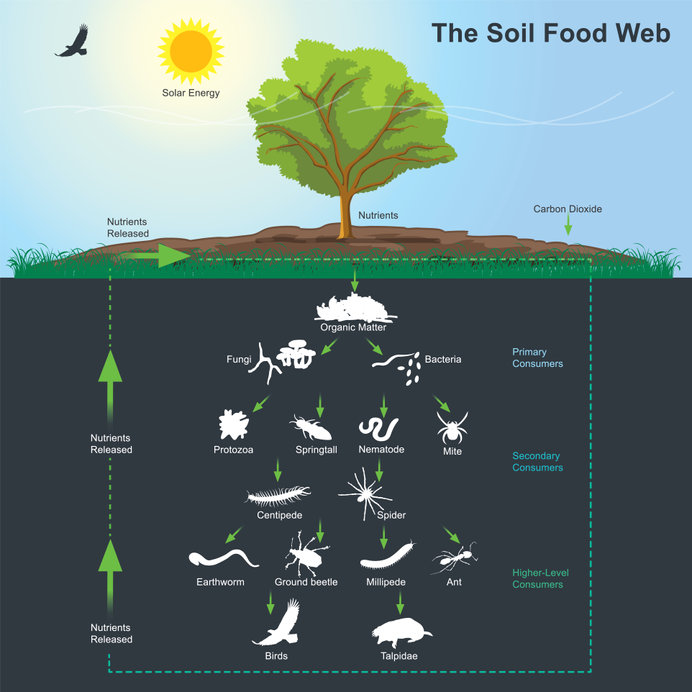 By creating living soils at GLSC, all we're doing is trying to mimic nature in a fashion that will build long term soil health and provide maximum benefit for your plants. We provide a whole range of food sources for beneficial microbes; and microbes will be present in many of the inputs we use as ingredients in our mixes. However - we don't inoculate our soils with additional microbes. The reason why is that microbes need plants as part of that cycle - so if we're mixing soil and bagging it - many microbes won't survive under those conditions. We feel it's better you supply microbes to your garden directly - although remember that if you have viable garden soil; they'll be present anyway, and populations will naturally increase with the right conditions and food sources supplied.
By creating living soils at GLSC, all we're doing is trying to mimic nature in a fashion that will build long term soil health and provide maximum benefit for your plants. We provide a whole range of food sources for beneficial microbes; and microbes will be present in many of the inputs we use as ingredients in our mixes. However - we don't inoculate our soils with additional microbes. The reason why is that microbes need plants as part of that cycle - so if we're mixing soil and bagging it - many microbes won't survive under those conditions. We feel it's better you supply microbes to your garden directly - although remember that if you have viable garden soil; they'll be present anyway, and populations will naturally increase with the right conditions and food sources supplied.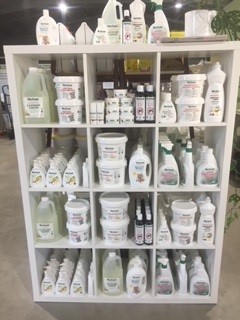 Herbon Clearance - we are clearing out our Herbon products to make way for new stock. Herbon products are natural & low allergy and we have a range of cleaning and personal products that we're offering at very reduced prices to our VIP customers - but hurry! Stock is limited ~ once it's gone, it's gone!
Herbon Clearance - we are clearing out our Herbon products to make way for new stock. Herbon products are natural & low allergy and we have a range of cleaning and personal products that we're offering at very reduced prices to our VIP customers - but hurry! Stock is limited ~ once it's gone, it's gone!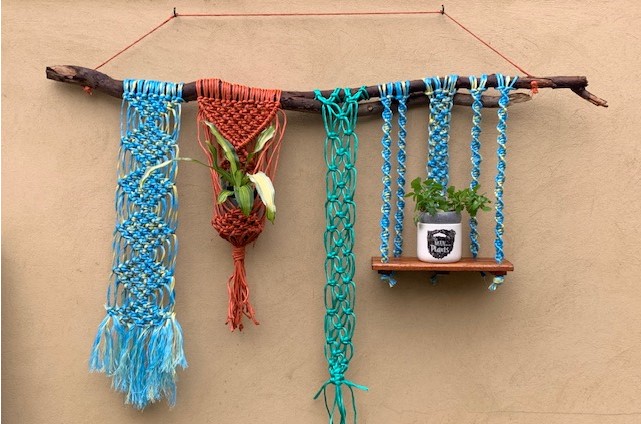 We've had some fabulous entries this month - please keep them coming in!! We pick someone at random each month, so there's no reason you can't snap pics every few weeks and keep your chances alive of being chosen. The winner gets a $50 store credit to spend with us @GLSC.This month's winner certainly made us smile with her unique approach to recycling the baling twine that we get bundling up all of the straw and pea straw we order. (We often have quite a bit to give away, if you need it - it's surprising how you can MacGyver things around the garden with it.) In this case she's experimented with various styles for plant hangers.
We've had some fabulous entries this month - please keep them coming in!! We pick someone at random each month, so there's no reason you can't snap pics every few weeks and keep your chances alive of being chosen. The winner gets a $50 store credit to spend with us @GLSC.This month's winner certainly made us smile with her unique approach to recycling the baling twine that we get bundling up all of the straw and pea straw we order. (We often have quite a bit to give away, if you need it - it's surprising how you can MacGyver things around the garden with it.) In this case she's experimented with various styles for plant hangers.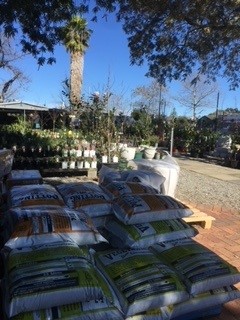 Please support your local independent retailer who supports us! The specialist retailers listed here will be happy to give you gardening advice and help you with our products - please call to check what lines they carry.
Please support your local independent retailer who supports us! The specialist retailers listed here will be happy to give you gardening advice and help you with our products - please call to check what lines they carry.






